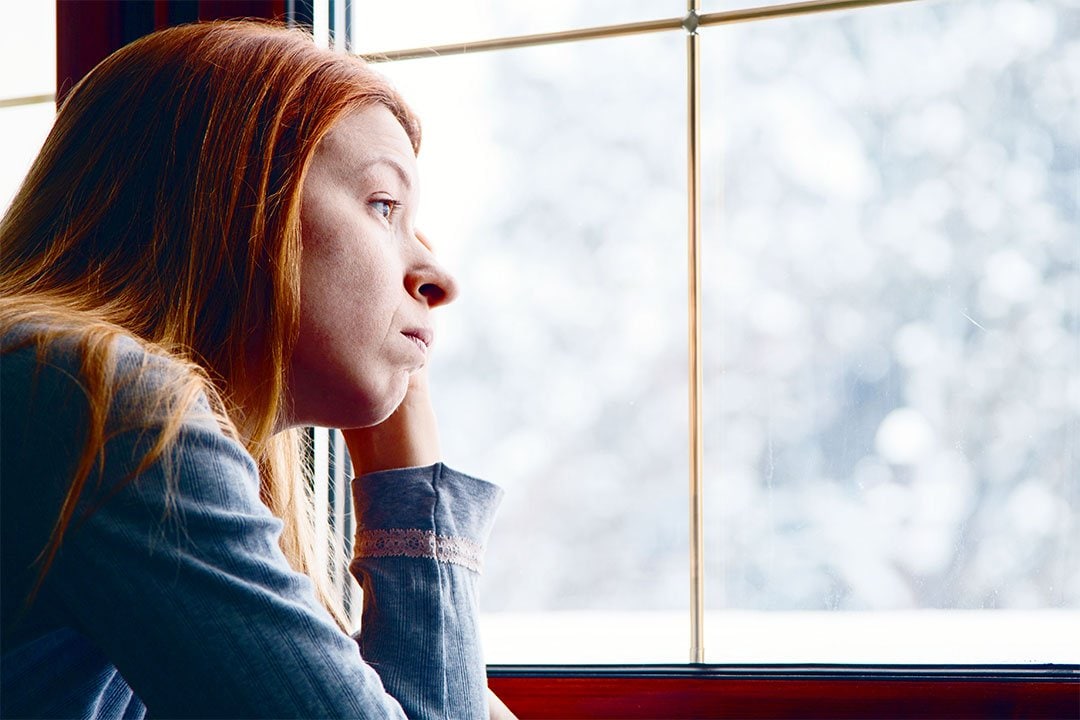Do You Suffer from Seasonal Affective Disorder?
 With our short days, long nights, and freezing cold temperatures, Minnesotans often joke about wanting to crawl back under the covers and hibernate until spring. It's a tempting thought, but for those who suffer from Seasonal Affective Disorder, it's no joke.
With our short days, long nights, and freezing cold temperatures, Minnesotans often joke about wanting to crawl back under the covers and hibernate until spring. It's a tempting thought, but for those who suffer from Seasonal Affective Disorder, it's no joke.
According to the National Institute of Mental Health, Seasonal Affective Disorder (SAD) is a type of depression that comes and goes with the seasons, typically starting in the late fall and early winter and going away during the spring and summer. It's not a separate disorder, but a form of depression that has a recurring seasonal pattern.
To be diagnosed with Winter Pattern of SAD, patients must meet the full criteria of Major Depression for a period of at least two years.
Symptoms of Major Depression include:
- Feeling depressed most of the day, nearly every day
- Feeling hopeless or worthless
- Having low energy
- Losing interest in activities you once enjoyed
- Having problems with sleep
- Experiencing changes in your appetite or weight
- Feeling sluggish or agitated
- Having difficulty concentrating
- Having frequent thoughts of death or suicide
In addition, patients with the Winter Pattern of SAD may also exhibit the following symptoms:
- Having low energy
- Hypersomnia (oversleeping or excessive sleepiness)
- Overeating
- Weight gain
- Craving for carbohydrates
- Social withdrawal (feel like "hibernating")
Although the causes of SAD are unknown, recent studies have led to a few theories. The first is that people who suffer from Seasonal Affective Disorder may have trouble regulating the production of serotonin. This is one of the key neurotransmitters the brain uses to regulate mood and is found to be 5% higher in SAD patients during the winter months.
Another theory is that people with SAD may overproduce the sleep hormone melatonin. As winter days become shorter and daylight decreases, the body responds by increasing its production of melatonin. However, people suffering from SAD seem to have a stronger reaction to the increased levels of melatonin and are left feeling sleepy and lethargic.
Decreased levels of Vitamin D may also play a role in the onset of SAD. Because the sun is the body's best source of Vitamin D, it stands to reason that decreased daylight hours during the winter months can result in a Vitamin D deficiency. And because Vitamin D is also involved with serotonin activity, there is thought to be a strong connection with clinical depression.
The good news is, there are treatments and therapies for Seasonal Affective Disorder. The first is medication. SAD can be successfully treated with Selective Serotonin Reuptake Inhibitors (SSRIs) – a common antidepressant. Although Vitamin D has not been proven to be as effective in treating SAD as an antidepressant, it is also commonly prescribed to help combat the symptoms of depression in those who are found to have a deficiency.
Another common treatment is light therapy. Patients who suffer from SAD may find some relief by sitting in front of a light box daily from the early fall until spring. These boxes require 20-60 minutes of exposure each day and provide an amount of light that is approximately 20 times greater than ordinary indoor lighting.
Finally, cognitive behavioral therapy (CBT) is a form of psychotherapy that can be adapted for use with SAD patients. Working with a licensed CBT therapist, patients are taught to become more aware of their negative thoughts and behaviors, then develop coping strategies to help regulate their emotions and mood.
Major Depression is a serious condition that requires medical care, regardless of the season in which it occurs. If you feel you may be suffering from Seasonal Affective Disorder, don't just assume you can "wait it out" until spring. Make an appointment with your primary physician or another medical provider today.